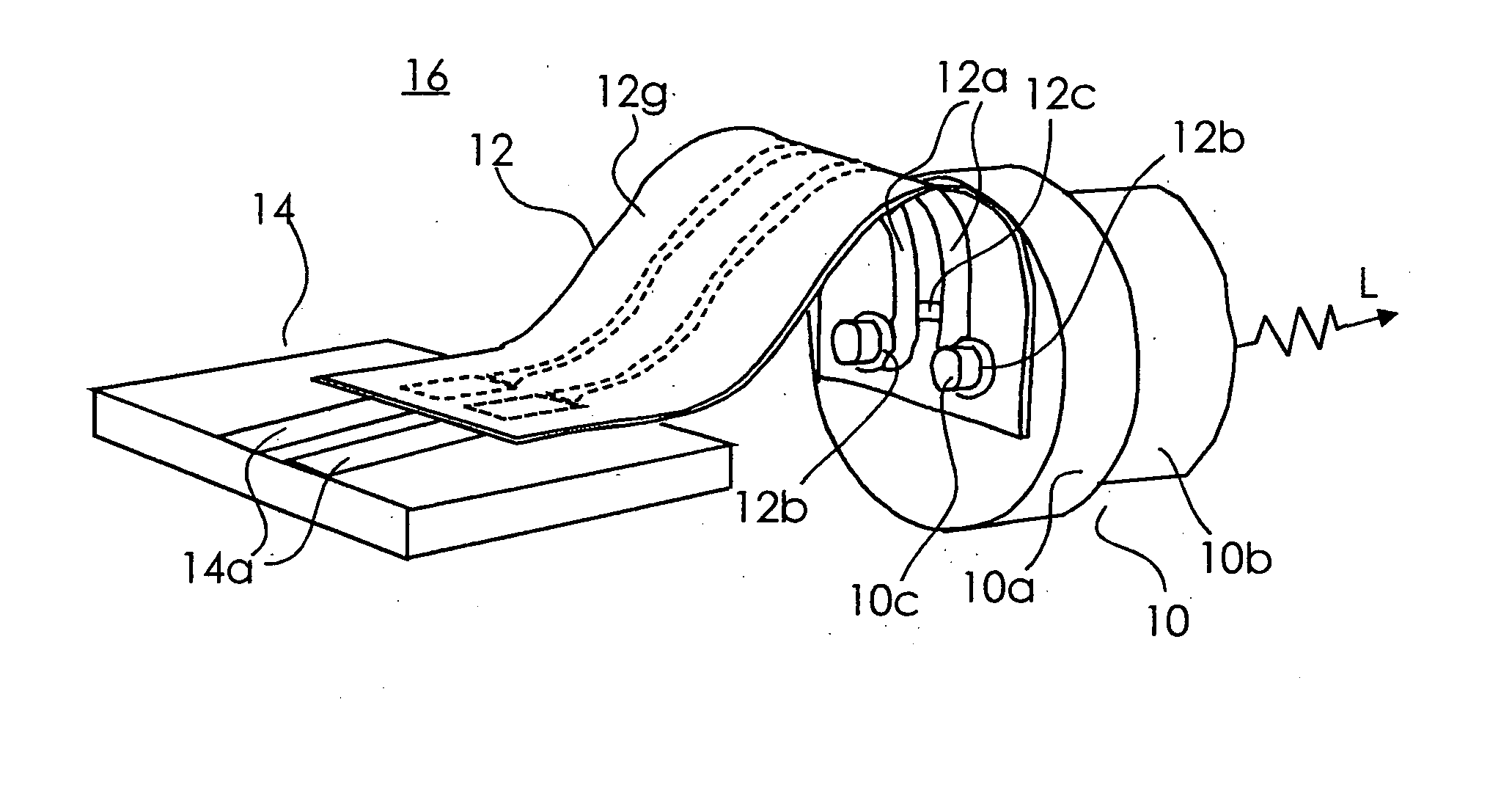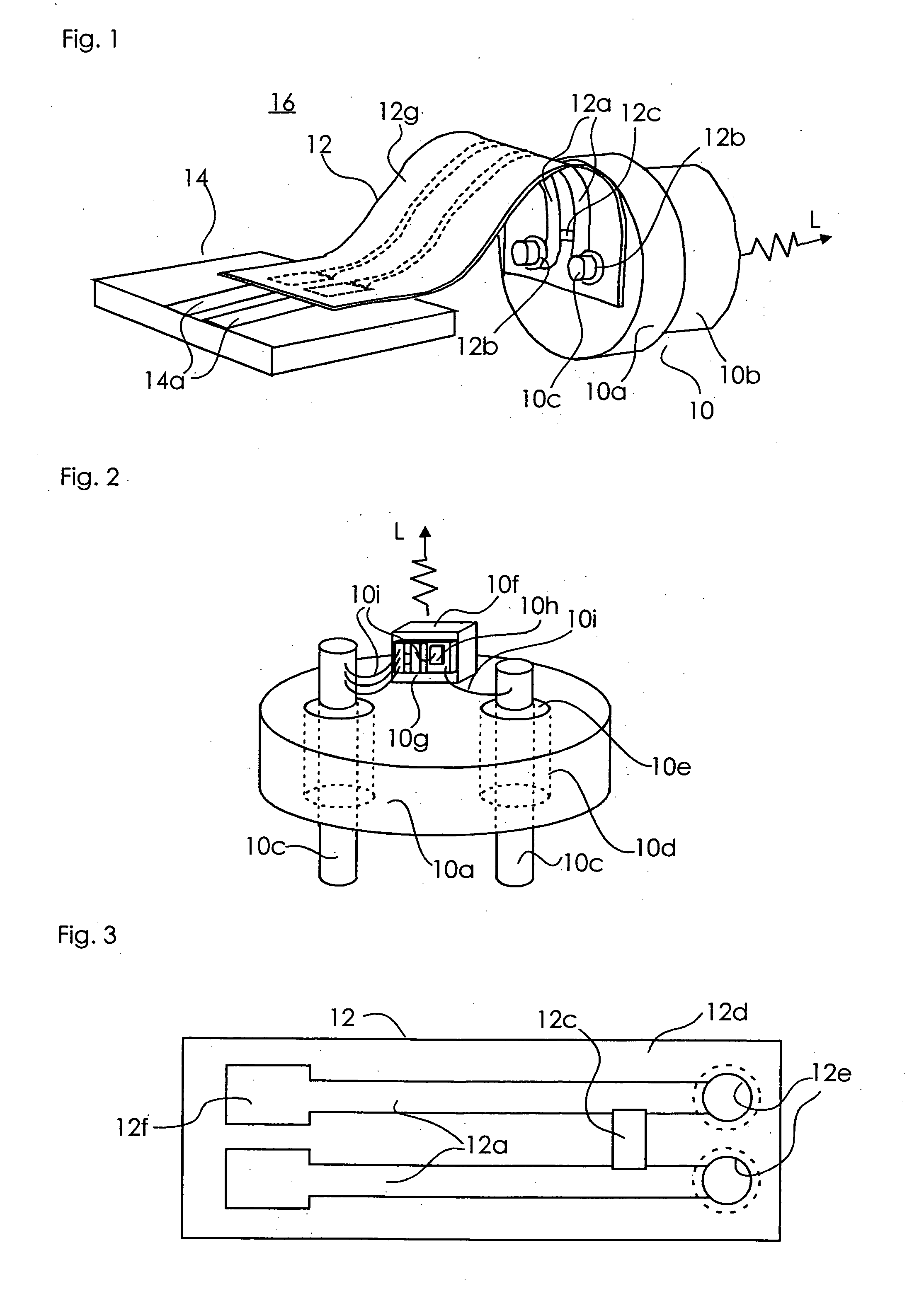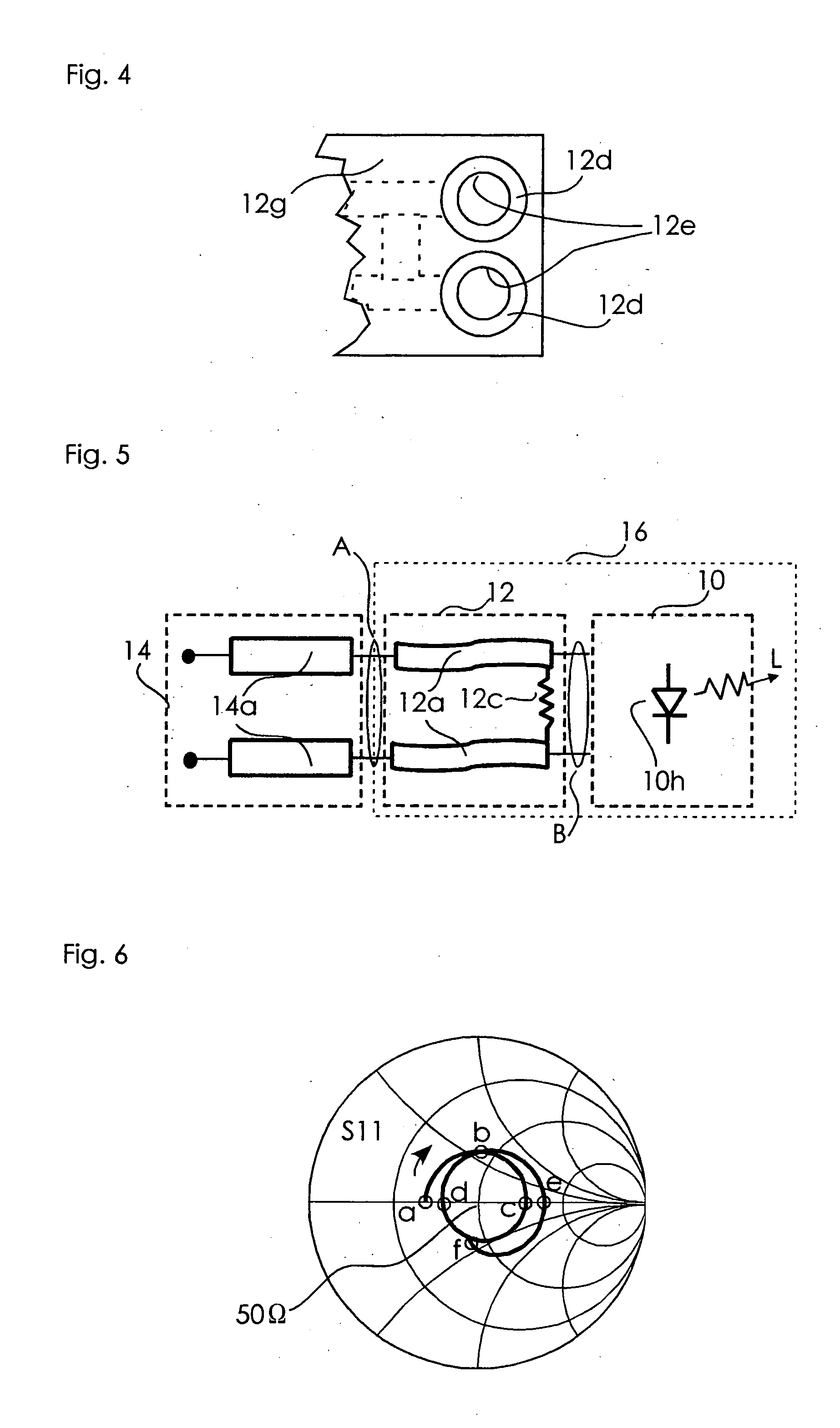Optical semiconductor device
a semiconductor and optical technology, applied in semiconductor lasers, printed circuit aspects, printed circuit non-printed electric components association, etc., can solve the problems of high stress to be developed at the soldered portion of the circuit board, damage, unsoldering, etc., to reduce the distortion of waveforms and restrain interference of high frequencies.
- Summary
- Abstract
- Description
- Claims
- Application Information
AI Technical Summary
Benefits of technology
Problems solved by technology
Method used
Image
Examples
first embodiment
[0053]FIG. 1 is a perspective view of an optical semiconductor device according to an embodiment of the present invention; FIG. 2 is a perspective view showing the interior of a can package according to an embodiment of the present invention; FIG. 3 is a plan view of the flexible substrate according to an embodiment of the present invention observed from the front face thereof; FIG. 4 is a partial plan view of the flexible substrate according to the embodiment of the present invention observed from the back face thereof; and FIG. 5 is an equivalent circuit diagram of the optical semiconductor device shown in FIG. 1. In the drawings to be referred to below, like reference numerals will denote like or equivalent components.
[0054] Referring to FIG. 1, a can package 10 serving as an optical semiconductor package is sealed by a cap 10b that protects elements, such as a laser diode, mounted on a stem 10a serving as a substrate. Lead terminals 10c serving as electrode terminals for connec...
second embodiment
[0104]FIG. 15 is a perspective view of an optical semiconductor device according to one embodiment of the present invention. FIG. 16 is an equivalent circuit diagram of the optical semiconductor device shown in FIG. 15.
[0105] The first embodiment has referred to the example wherein the resistor 12c working as the impedance matching means is connected near the connection area B wherein the flexible substrate 12 and the lead terminals 10c of the can package 10 are connected.
[0106] A laser device 25 according to the second embodiment has the same construction as that according to the first embodiment except that a capacitor 12j is provided in addition to a resistor 12c, the capacitor 12j being connected in series with the resistor 12c. The resistor 12c and the capacitor 12j constitute the impedance matching means. In this case, the resistor 12c is, for example, a chip resistor, and the capacitor 12j is, for example, a chip capacitor.
[0107] A bias voltage of about a threshold value i...
third embodiment
[0119]FIG. 20 is a perspective view of an optical semiconductor device according to one embodiment of the present invention. FIG. 21 is an equivalent circuit diagram of the optical semiconductor device shown in FIG. 20.
[0120] The second embodiment has shown a case where the transmission lines 12a are directly interconnected through the capacitor 12j and the resistor 12c connected in series. The construction of the third embodiment is the same as that of the second embodiment except that each transmission line is connected with a grounding end through the intermediary of a capacitor 12j and a resistor 12c connected in series.
[0121] Referring to FIG. 20, in a flexible substrate 12 of a laser device 30, thin-film resistors 12c having one ends thereof respectively connected to transmission lines 12a at near through holes 12e are disposed on a polyimide film 12d, and the other ends of the individual thin-film resistors 12c and islands 12k formed of conductive films that provide the ele...
PUM
 Login to View More
Login to View More Abstract
Description
Claims
Application Information
 Login to View More
Login to View More - Generate Ideas
- Intellectual Property
- Life Sciences
- Materials
- Tech Scout
- Unparalleled Data Quality
- Higher Quality Content
- 60% Fewer Hallucinations
Browse by: Latest US Patents, China's latest patents, Technical Efficacy Thesaurus, Application Domain, Technology Topic, Popular Technical Reports.
© 2025 PatSnap. All rights reserved.Legal|Privacy policy|Modern Slavery Act Transparency Statement|Sitemap|About US| Contact US: help@patsnap.com



